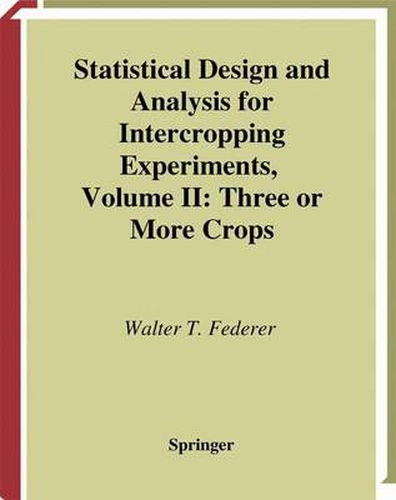Readings Newsletter
Become a Readings Member to make your shopping experience even easier.
Sign in or sign up for free!
You’re not far away from qualifying for FREE standard shipping within Australia
You’ve qualified for FREE standard shipping within Australia
The cart is loading…






This title is printed to order. This book may have been self-published. If so, we cannot guarantee the quality of the content. In the main most books will have gone through the editing process however some may not. We therefore suggest that you be aware of this before ordering this book. If in doubt check either the author or publisher’s details as we are unable to accept any returns unless they are faulty. Please contact us if you have any questions.
Intercropping is an area of research for which there is a desperate need, both in developing countries where people are rapidly depleting scarce resources and still starving, and in developed countries, where more ecologically and economically sound ways of feeding ourselves must be developed. The only published guidelines for conducting such research and analyzing the data have been scattered about in various journal articles, many of which are hard to find. This book condenses these methods and will be immensely valuable to agricultural researchers and to the statisticians who help them design their experiments and interpret their results.
$9.00 standard shipping within Australia
FREE standard shipping within Australia for orders over $100.00
Express & International shipping calculated at checkout
This title is printed to order. This book may have been self-published. If so, we cannot guarantee the quality of the content. In the main most books will have gone through the editing process however some may not. We therefore suggest that you be aware of this before ordering this book. If in doubt check either the author or publisher’s details as we are unable to accept any returns unless they are faulty. Please contact us if you have any questions.
Intercropping is an area of research for which there is a desperate need, both in developing countries where people are rapidly depleting scarce resources and still starving, and in developed countries, where more ecologically and economically sound ways of feeding ourselves must be developed. The only published guidelines for conducting such research and analyzing the data have been scattered about in various journal articles, many of which are hard to find. This book condenses these methods and will be immensely valuable to agricultural researchers and to the statisticians who help them design their experiments and interpret their results.